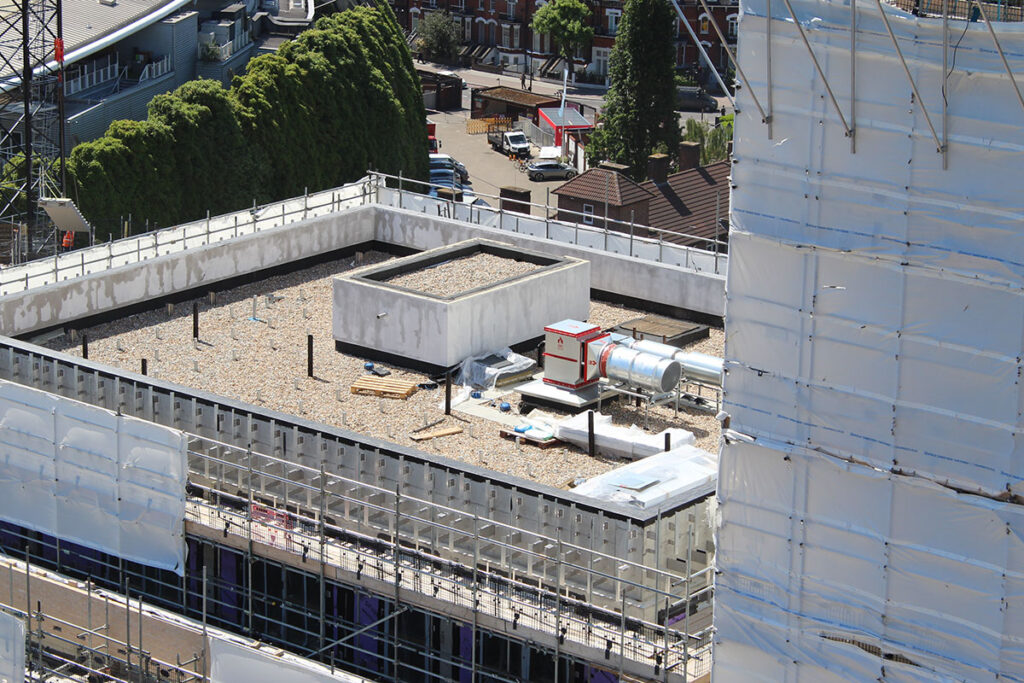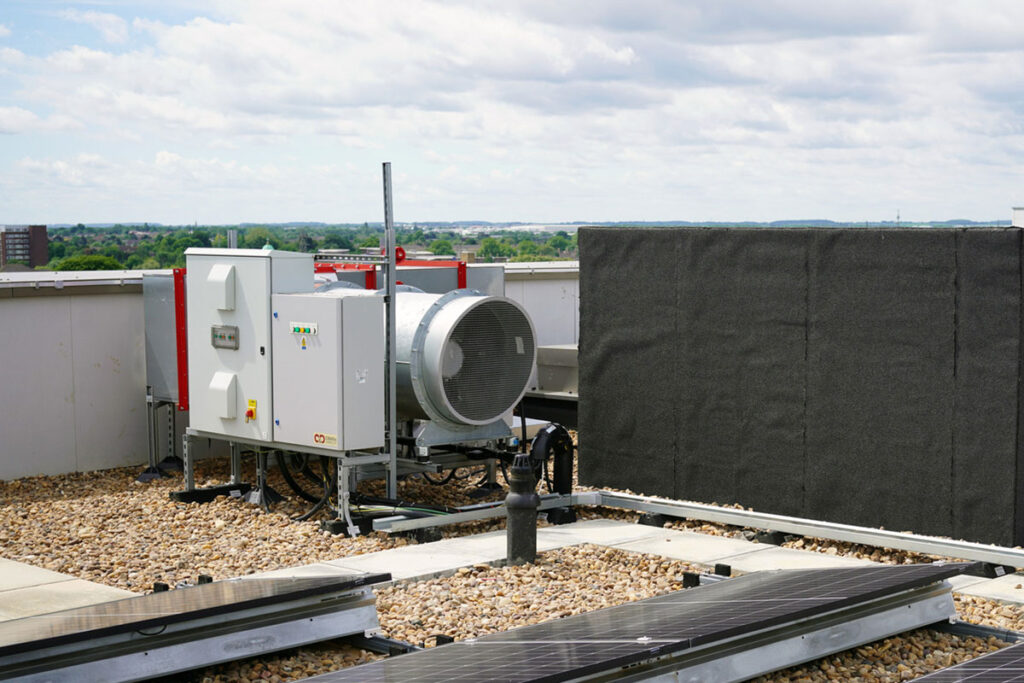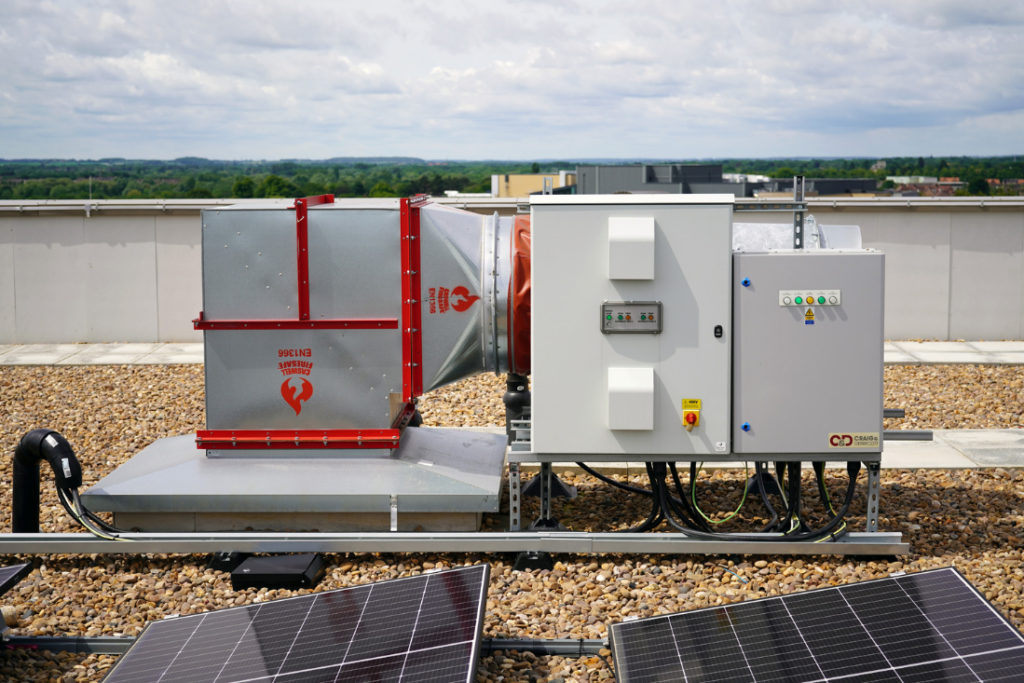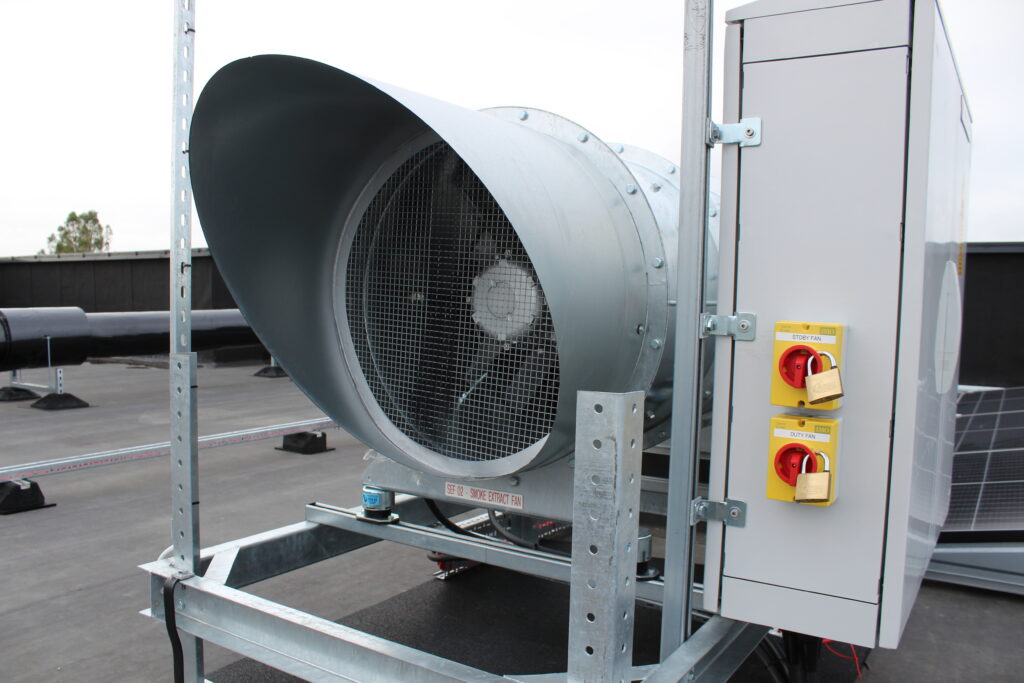Smoke extraction systems are vital to life safety and property protection in fire events. Installed across commercial, industrial, and multi-residential developments, these systems enable the safe evacuation of occupants, assist emergency services, and reduce structural damage by controlling the spread of heat and smoke.
This guide outlines the key components, design principles, and installation considerations for modern smoke extraction systems, enabling developers and contractors to meet safety regulations and achieve performance goals.
What Is a Smoke Extraction System?
A smoke extraction system is an engineered fire safety system designed to remove smoke, heat, and toxic gases from a building during a fire.
It typically consists of a coordinated network of:
- Smoke extract fans
- Ducting or smoke shafts
- Control panels and sensors
- Smoke dampers and grills
Key System Components
Smoke Extract Fans
- Motorised fans rated to operate in high heat (F300/60 or F400/120)
- Mounted on roofs, walls, or shafts to remove smoke
Smoke Shafts / Ductwork
- Facilitates the extraction of smoke, which protects escape routes
- Must be fire-resistant and pressure-tested
Automatic Dampers
- Open in response to smoke detection
- Prevent smoke migration when closed
Control Panels and Interfaces
- Integrates with fire alarm systems
- Offers manual override for emergency services
CO Detectors or Smoke Sensors
- Activate the system upon detecting fire or gas buildup
Smoke Extraction vs Smoke Ventilation
While often used interchangeably, there’s a technical distinction:
- Smoke Ventilation: May include passive (natural) systems like AOVs
- Smoke Extraction: Active systems using fans to draw out smoke forcibly
Extraction systems are usually required in:
- Underground car parks
- Enclosed shopping centres
- Warehouses and distribution centres
- High-rise residential cores without natural vent paths
Smoke Extraction Design Considerations
Effective design must account for:
- Building height and layout
- Occupancy and evacuation time
- Fire load and material combustibility
- Smoke movement and thermal layering
- Pressure differentials between compartments
- Regulations demand that extracted smoke doesn’t re-enter escape routes or adjacent spaces.
Smoke Extraction Compliance Requirements
Smoke extraction systems must comply with:
- Approved Document B (ADB)
- BS EN 12101-3: Smoke and heat control systems – powered ventilators
- BS 9999: Code of practice for fire safety in commercial buildings
- BS 7346-7: Code of practice for smoke control systems
FDS Contracting: Design & Installation Services
We offer turnkey smoke extraction solutions, including:
- SCA IFC SDI 19 certified smoke venting design and CFD validation
- Supply of certified smoke extraction fans
- Fire-rated duct and SCA IFC SDI 19 damper installation
- Control system integration with BMS/fire alarm
- Testing, commissioning, and ongoing servicing
Smoke Extraction FAQs
How long should a smoke extract fan operate in a fire?
Minimum 60 to 120 minutes at 300°C or 400°C, depending on risk category.
Are CFD models required for smoke extraction system approval?
In most medium-to-high risk commercial settings, yes, especially for BSR Gateway reviews.
Can smoke extraction systems be retrofitted?
Yes. We specialise in upgrading older buildings with compliant extraction systems.
Smoke Extraction Systems
Smoke extraction systems are complex but critical components of fire safety in commercial and multi-occupancy buildings. By actively removing smoke and heat, they enhance life safety, reduce property loss, and support compliance.
Contact us for a customised smoke extraction design proposal or a technical assessment of your current system.



